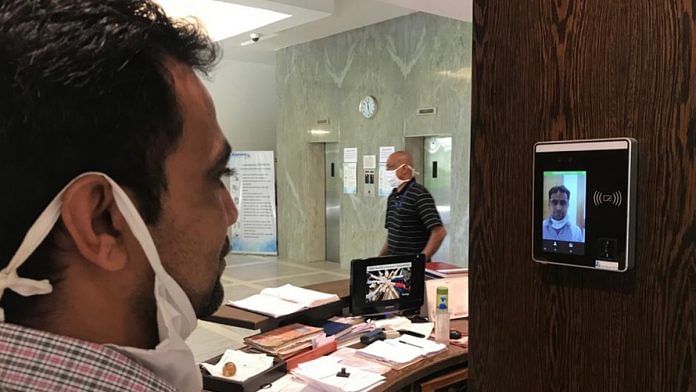The design and deployment of facial recognition technology, or FRT, by law enforcement agencies in India has been a subject of some deliberation. There have been concerns raised about individual privacy, informational autonomy, state sanctioned mass surveillance, and in-built technological flaws that can further disadvantage vulnerable sections of the population.
The Centre for Applied Law & Technology Research (ALTR) has put out two working papers on FRT, the first of which covers broad risks and legal challenges that are likely to arise due to the expanding use of FRT by law enforcement agencies. Our second working paper examined these problems through an empirical case study of the Delhi Police’s use of FRT in tandem with their network of CCTV cameras across pockets of the city. It found that the use of FRT by the Delhi Police, due to the uneven distribution of police stations in the city, can be discriminatory towards Muslims.
This final paper examines how the FRT is procured by public law enforcement. The role that the private sector plays in designing and developing FRT for law enforcement agencies has continued to be under examined, despite its significant impacts for society and the rule of law. There are four broad concerns that emanate from the clandestine manner in which private corporations have been involved in the design and procurement processes.
Also read: Indian govt’s approach to facial recognition is flawed & driven by faulty assumptions
Privacy risk
First, there is an overarching privacy risk – the development of FRT algorithms requires access to large datasets of pictures, videos or any other graphic corpuses. The question arises regarding how private corporations have accessed such data in India. Furthermore, there are also concerns around whether the private sector should have unbridled access to vital biometric data (including facial scans) of individuals to design such technology purportedly for state security purposes, in complete opacity.
Delegation of surveillance functions to private sector
The second issue that emerges from the involvement of the private sector is whether the state is indirectly delegating certain essential functions. Surveillance as an activity is exceptional even for the state to pursue, and is certainly not a function that can be delegated to a non-government, private entity. The manner in which private corporations are designing and developing FRT for law enforcement agencies, it is unclear whether their role ends once these tools have been procured, or if they continue backend assistance in the actual implementation and use of these tools by law enforcement. For this Working Paper we attempted to solicit a better understanding of this through RTI applications with different states, but the complete lack of transparency in this process has yielded no inputs from any of the concerned stakeholders (i.e. the government and its agencies, or the private sector corporations working in this sector).
Also read: Jubilation over number of CCTVs is bizarre. India needs to make privacy laws, not become China
Opaque processes and decision making
The third issue is around the overall lack of transparency and documentation through which procurement is materialising. Any such process typically has well defined processes in place which are available for public scrutiny (commonly through the RTI route), or even official audit reports. However, with respect to procurement of FRT, the conspicuous lack of any information in the public domain is not only disconcerting, but a critical red flag in the whole process. It is unclear how certain private sector companies have repeatedly (as per reportage) been offered these procurement contracts, under what terms, and what kinds of checks and balances are governing this entire cycle. Such blanket stifling of any information is unlikely to generate any trust in the manner of use of these technologies, and will present real legal and due process issues.
Private incentives drive public policy
The fourth issue is the fact that with private provision of surveillance technology, there is a real risk of private incentives directing public policy. Ideally, any surveillance function of the state should be driven by public priorities and wishes; the involvement of the private sector, particularly under opaque conditions, means that the profit motive can drive surveillance policy. Venture capital funded FRT companies can discount the price of this technology and push its use in law enforcement contexts, without any public input or scrutiny.
The objective of this Working Paper is to highlight these issues which have seemingly failed to gain attention of researchers, activists and civil society at large, in discourses surrounding state surveillance and the growing use of sophisticated, emerging technologies like FRT for this.
Ameen Jauhar is a Senior Resident Fellow at Vidhi Centre for Legal Policy, and leads the Centre for Applied Law and Technology Research. He tweets @TheTrekkie89.
Jai Vipra is a Senior Resident Fellow at the Centre for Applied Law and Technology Research (ALTR) at Vidhi Centre for Legal Policy.
This article was first published by Vidhi Centre for Legal Policy.






